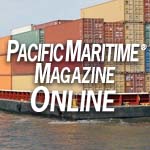NOAA has polar-orbiting and geostationary satellites that participate in the Search and Rescue Satellite Aided Tracking system, or COSPAS-SARSAT.
The system relies on a worldwide spacecraft network to find and spot distress signals coming from emergency beacons generated from aircraft, boats and Personal Locator Beacons, NOAA said.
Once a distress signal is located by a NOAA satellite, that data is passed on to the SARSAT Mission Control Center at NOAA’s Satellite Operations Facility in Suitland, Maryland, and then sent to Rescue Coordination Centers.
Last year, 217 of the 304 people saved were water rescues. Most SARSAT rescues were in Florida with 67 and in Alaska with 29, according to NOAA.
“By law, beacon owners are required to register their devices online with NOAA,” the organization said. “The registration information helps provide better and faster assistance to people in distress and reduces false alarms. It may also provide what type of help is needed.”

